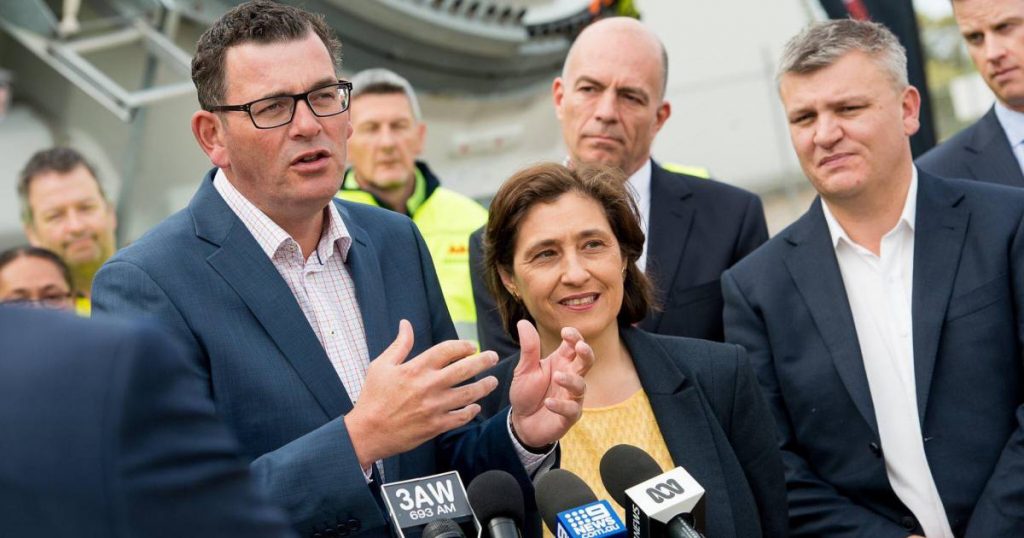
Image: Lily D’Ambrosio via Facebook
Victoria’s Andrews Labor Government has introduced a Bill into parliament to legislate boosting Victoria’s Renewable Energy Target (VRET) to 50 per cent by 2030. This is great, but…
The current VRET, which set a goal of 25 per cent renewables by 2020 and 40 per cent by 2025, was enshrined in law in 2017. Over the 2017-18 financial year, eligible renewable energy sources accounted for approximately 18.3 per cent of Victoria’s electricity generation and the state appears on track to meet the 2020 target. A further boosted VRET or not, it would likely reach 50% by 2030 anyway.
The introduction of the Bill has been welcomed by many, although some believe the Andrews Labor Government could have been more ambitious.
But there’s a bigger issue – it’s good and wise to set goals for the future, but you’ve got to look after now too.
New Jobs? What About Those Being Lost?
The Victorian Government says lifting the VRET to 50 per cent by 2030 will create jobs while putting downwards pressure on electricity prices.
“VRET has helped create a jobs boom – increasing it will mean more jobs, more investment and lower power bills,” said Minister for Energy, Environment and Climate Change Lily D’Ambrosio. “These targets help industry to invest with certainty, creating local jobs – particularly in regional Victoria.”
Jobs and certainty? There are many participants in the Victorian home power solar sector that would like to see some of both at the moment.
Lily D’Ambrosio is also the Minister for Solar Homes, the scheme that is sending many in the state’s residential PV sector to the wall because of the way the rebooted rebate for solar power is being managed. It is effectively putting a cap on residential solar installations in the state due to the number of rebates being released each month and the nature of the scheme’s eligibility criteria.
A sector that was doing well prior to the subsidy it didn’t ask for grew to meet demand during the rebate’s first phase from August 2018 – April 2019. It’s likely more than 6,000 systems were installed in March this year, but a sudden pause in the program in April saw new sales fall off a cliff.
The rebooted scheme kicked off in July with a quota for that month of just 3,333 PV rebates – not much more than what was installed in pre-rebate July last year (3,103). That was filled in less than 3 days. August’s allocation of 3,767 rebates was snapped up in 90 minutes.
The demand is there, but the rebates aren’t and Victorians are holding off on buying solar. Another issue is the clunkiness and invasive nature of the rebate application process that is seeing many abandon it.
As a result of all this, the state’s residential solar sector is shrinking – jobs are already being lost by the bucketload and Minister D’Ambrosio has been told this on a number of occasions.
Lily Not Listening, Doesn’t Appear To Care
It was only last Thursday another solar rally was held, this time outside the Premier Daniel Andrews’ office in Melbourne, protesting the carnage occurring in the industry. A recent survey by the Smart Energy Council of 84 solar companies reportedly indicated 226 jobs had been lost so far in just the businesses surveyed – and there are around 500 solar companies in the state.
It’s not just business owners and workers affected – this has knock-on effects for the wider Victorian community, including owners of solar power systems installed by businesses that have gone bust. They’ll be left without technical support and face difficulties if they find a need to make a warranty claim. Fewer solar companies also means less competition and the administrative burden of the program on solar businesses is pushing prices up.
While a boosted VRET may create around 24,000 jobs by 2030 and drive an additional $5.8 billion in economic activity in Victoria as the government claims, some of those won’t be new jobs but simply replacing those already lost through mismanagement of the Solar Homes scheme. How many that will ultimately be remains to be seen.
These are job losses and subsequent trauma to Victorian families that could be avoided with some simple tweaking of the program, such as reducing the rebate and substantially increasing the monthly allocation level. Minister D’Ambrosio even had the gall to reference the Solar Homes program in the look-over-here VRET announcement. I can only imagine how staff and owners of solar businesses doing it tough in Victoria must have been feeling when reading it.
Lily might not be listening, but here’s hoping Dan does – and changes are made soon, very soon, to set things right.

 RSS - Posts
RSS - Posts



Speak Your Mind